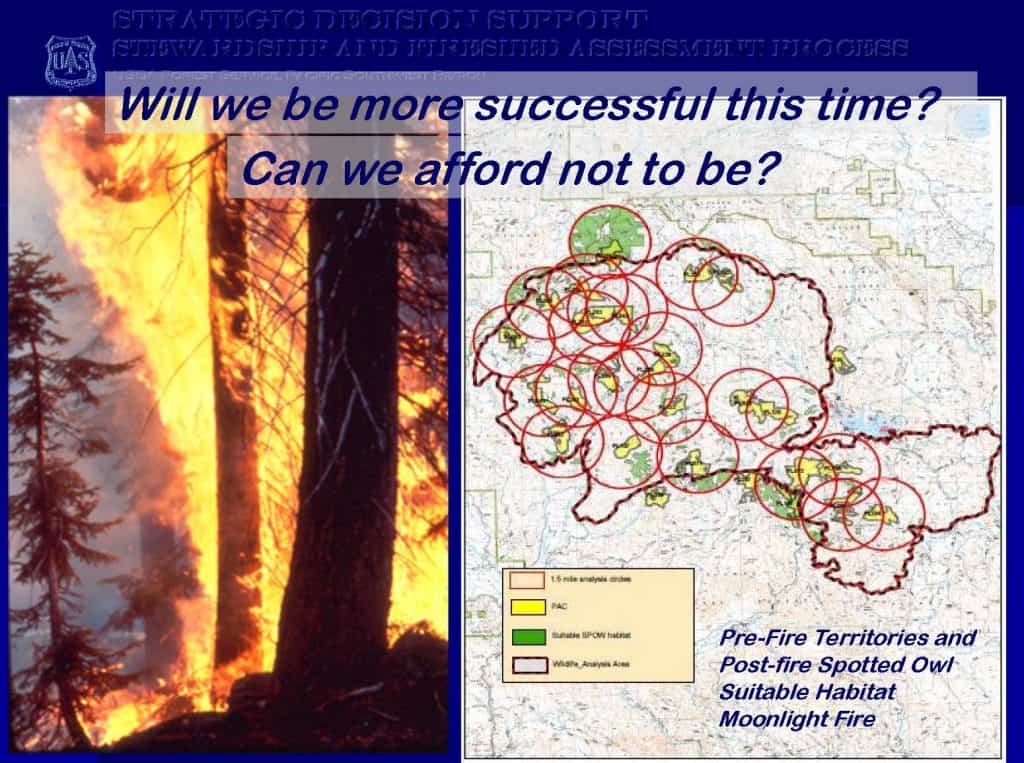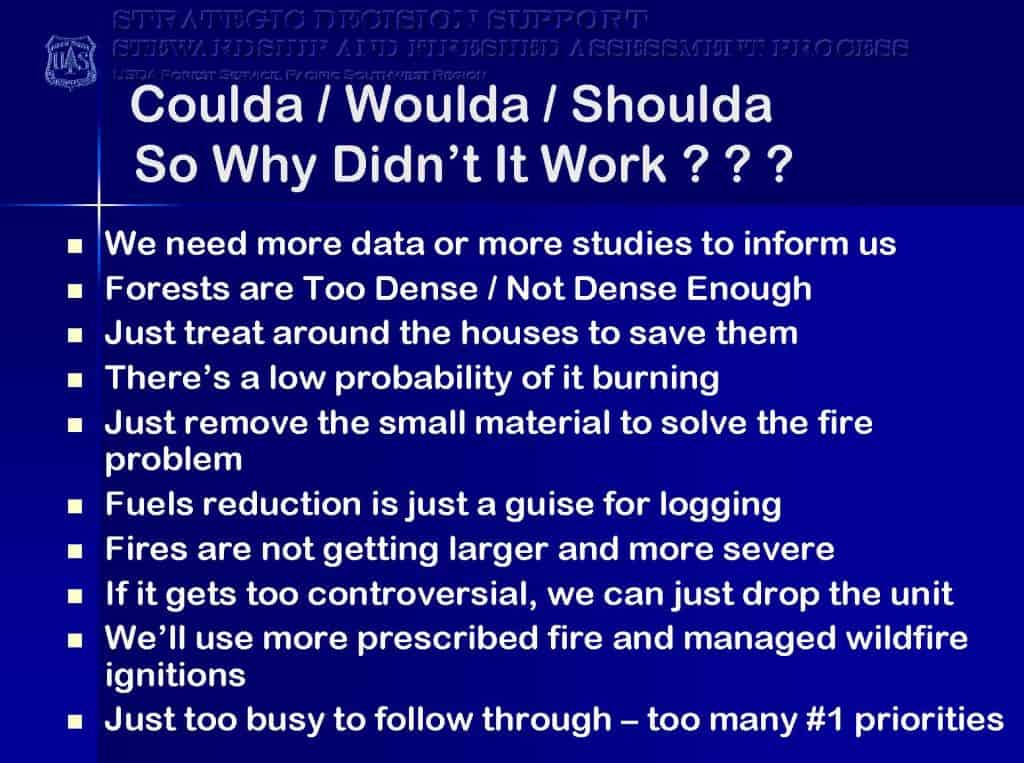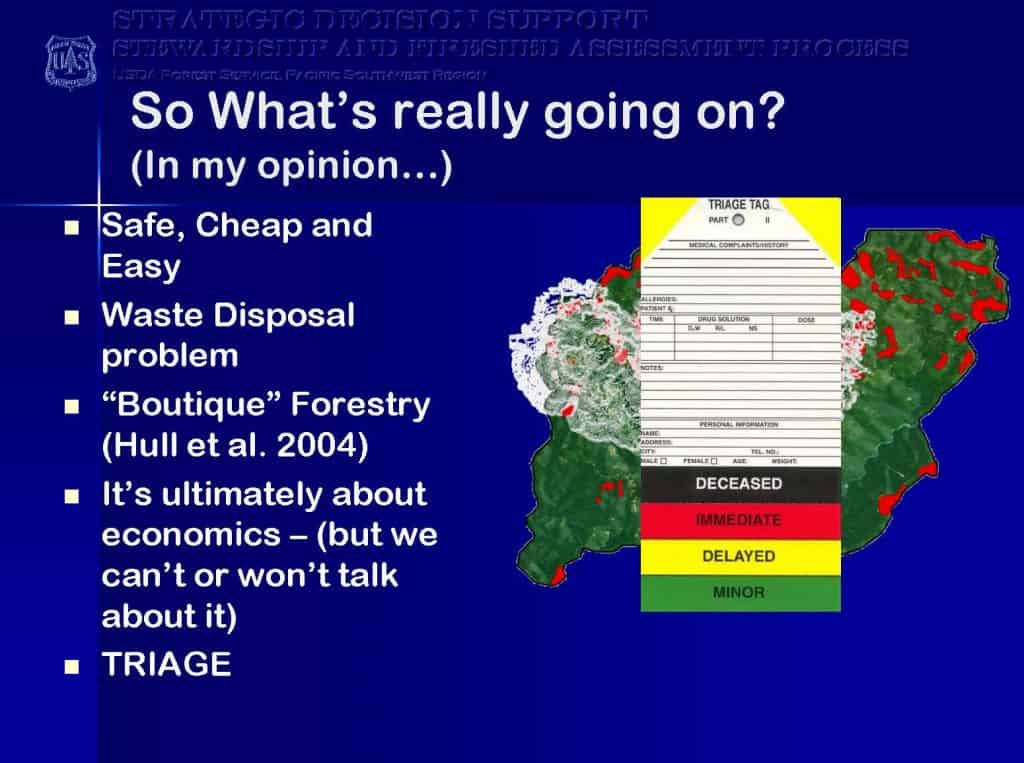Here are two current articles that get some things wrong but if we ignore those items and focus on the big picture that they present rather than on the details, I believe that we will find that we have more in common than we thought.
Between the two articles we see the full picture for PRIORITIZED actions to begin the long battle ahead to recover from national ashtrays, lost lives, lost homes and infrastructure, significantly decreased health of both humans and forests. It is a two pronged battle that includes both sound forest management and social management.
A) Using Forests to Fight Climate Change – California takes a small step in the right direction.
“The state’s proposed Forest Carbon Plan aims to double efforts to thin out young trees and clear brush in parts of the forest, including by controlled burning. This temporarily lowers carbon-carrying capacity. But the remaining trees draw a greater share of the available moisture, so they grow and thrive, restoring the forest’s capacity to pull carbon from the air. Healthy trees are also better able to fend off bark beetles. The landscape is rendered less combustible. Even in the event of a fire, fewer trees are consumed.
The need for such planning is increasingly urgent. Already, since 2010, drought and beetles have killed more than 100 million trees in California, most of them in 2016 alone, and wildfires have scorched hundreds of thousands of acres.
California’s plan envisions treating 35,000 acres of forest a year by 2020, and 60,000 by 2030 — financed from the proceeds of the state’s emissions-permit auctions. That’s only a small share of the total acreage that could benefit, an estimated half a million acres in all, so it will be important to prioritize areas at greatest risk of fire or drought.
The strategy also aims to ensure that carbon in woody material removed from the forests is locked away in the form of solid lumber, burned as biofuel in vehicles that would otherwise run on fossil fuels, or used in compost or animal feed.”
B) Why are California’s homes burning? It isn’t natural disaster it’s bad planning
This Op-ed by Richard Halsey (director of the California Chaparral Institute who sometimes posts on NCFP) is well written and, though I would disagree on some statements in his post, I present those that I do agree on in an attempt to show that there are specific components that are middle ground that we all should be able to agree on and focus on rather than focusing on what won’t work. Once we change our emphasis, hostility between opposing sides should decrease and progress should increase.
“Large, high-intensity wildfires are an inevitable and natural part of life in California. The destruction of our communities is not. But many of the political leaders we elect and planning agencies we depend upon to create safe communities have failed us. They have allowed developers to build in harm’s way, and left firefighters holding the bag. ”
“others blame firefighters for creating dense stands of chaparral in fire suppression efforts—when that’s the only way chaparral naturally grows, dense and impenetrable.”
“”we need to recognize that fire disasters aren’t natural, they’re social. And they require social solutions.”” (quote from University of Colorado geographer Gregory Simon)
–> Pay attention to the statement “fire disasters aren’t natural, they’re social”. My first reaction was “not true” but in the context of the Op Ed, I think that the author is making an appropriate distinction between the words “Catastrophic” and “Disaster” by reserving “Disaster” for those situations where the catastrophe falls mainly on humans.
“We also need to examine the best practices of other fire-prone regions. Communities in Australia often install external, under-eave/rooftop sprinklers, which have proven quite effective in protecting structures during wildfires. (Australians understand that wet homes do not ignite.) Such systems should be standard in all new developments in high fire hazard zones. It is likely they would have protected many of the homes consumed in Ventura’s Thomas fire this week.”
“As we do with earthquakes and floods, our goal should be to reduce the damage when wildfires arrive, not pretend we can prevent them from happening at all. That mindset starts at the planning department, not the fire station.”
C) Relevant Prior Posts with included references:
1) Finding Common Ground
IN SEARCH OF COMMON GROUND
Frustration: Will It Lead to Change?
2) Wildfire
Fuels management can be a big help in dealing with wildfires
Air Pollution from Wildfires compared to that from Prescribed burns
Inside the Firestorm
The Impact of Sound Forest Management Practices on Wildfire Smoke and Human Health
Humans sparked 84 percent of US wildfires, increased fire season over two decades
More on Wildfire and Sound Forest Management
Scientific Basis for Changing Forest Structure to Modify Wildfire Behavior and Severity
Articles of Interest on Fire
The Role of Sound Forest Management in Reducing Wildfire Risk
15 Minute TED Talk: “Forest Service ecologist proposes ways to help curb rising ‘Era of Megafires’”




